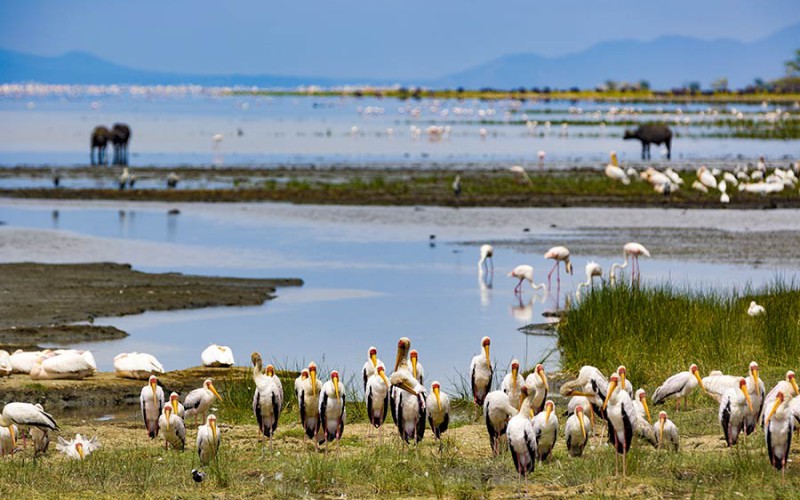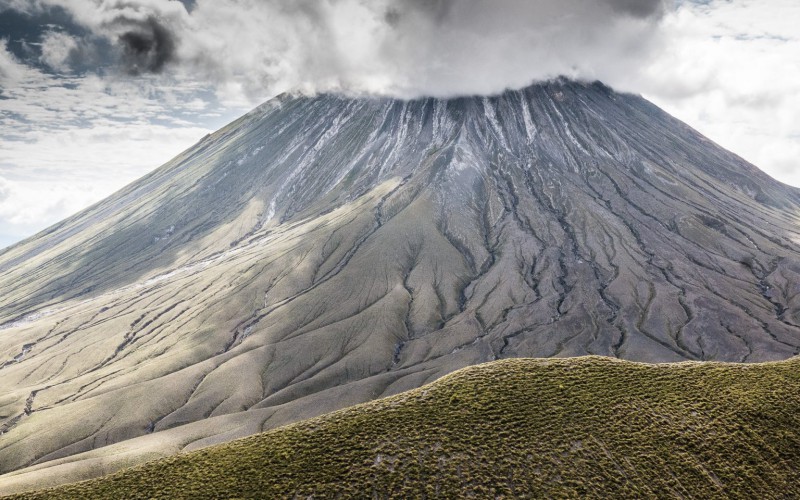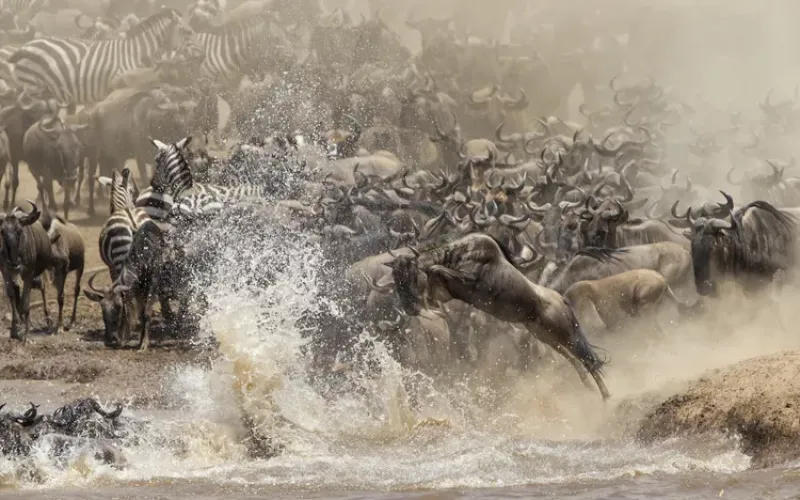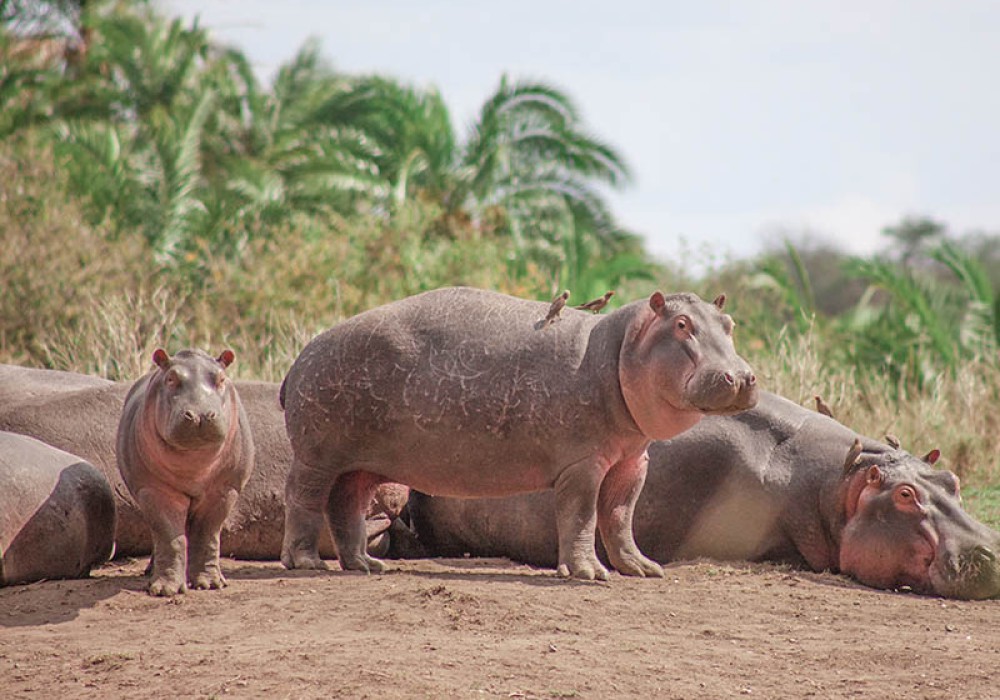Destination: Manyara Tanzania
Activities: Walking, Game view

LAKE MANYARA NATIONAL PARK
This is another lovely park, lying roughly between Tarangire and the Ngorongoro Crater. It boasts a beautiful little groundwater forest — the only real forest in Tanzania — where you can spot the adorable Blue Monkeys (also sometimes found on the Crater rim) — lots of giraffes, elephants, lions, leopards — and a very pretty lake-dusted pink in the distance with flamingos — impossible to get to up close, however. In the forest, just beyond the entry gate, there’s a Treetop Walkway which is quite fun — a series of suspension bridges through the forest canopy.
They found a leopard sleeping happily on one of the bridges one morning not long after it was installed, and the baboons, Velvet, and Blue Monkeys love it! The entrance to Lake Manyara is in the village of Mto wa Mbu, where you can arrange for a full village visit — and/or a visit to a local school (the kids are wonderful!). Many lodges in this are nearby coffee plantations, and most will also provide tours.
At harvest time you’ll see women walking along the roads with massive bags of coffee beans balanced alarmingly on their heads more about lake Manyara stretching for 50km along the base of the rusty-gold 600-meter high Rift Valley escarpment, Lake Manyara is a scenic gem, with a setting extolled by Ernest Hemingway as “the loveliest I had seen in Africa”.
The compact game-viewing circuit through Manyara offers a virtual microcosm of the Tanzanian safari experience. From the entrance gate, the road winds through an expanse of lush jungle-like groundwater forest where hundred-strong baboon troops lounge nonchalantly along the roadside, blue monkeys scamper nimbly between the ancient mahogany trees, dainty bushbuck tread warily through the shadows, and outsized forest hornbills honk cacophonously in the high canopy.
Contrasting with the intimacy of the forest is the grassy floodplain and its expansive views eastward, across the alkaline lake, to the jagged blue volcanic peaks that rise from the endless Maasai Steppes. Large buffalo, wildebeest, and zebra herds congregate on these grassy plains, as do giraffes – some so dark in coloration that they appear to be black from a distance. Inland of the floodplain, a narrow belt of acacia woodland is the favored haunt of Manyara’s legendary tree-climbing lions and impressively tusked elephants. Squadrons of banded mongoose dart between the acacias, while the diminutive Kirk’s dik-dik forages in their shade.
Pairs of klipspringer are often seen silhouetted on the rocks above a field of searing hot springs that steams and bubbles adjacent to the lakeshore in the far south of the park.
Manyara provides the perfect introduction to Tanzania’s birdlife. More than 400 species have been recorded, and even a first-time visitor to Africa might reasonably expect to observe 100 of these in one day.
Highlights include thousands of pink-hued flamingos on their perpetual migration, as well as other large waterbirds such as pelicans, cormorants, and storks.
Getting there
By road, charter, or scheduled flight from Arusha, en route to Serengeti and Ngorongoro Crater.
What to do
Game drives, night game drives, canoeing when the water levels are sufficiently high. Cultural tours, picnicking, bush lunch/dinner, mountain bike tours, abseiling and forest walks on the escarpment outside the park.
When to go
Dry season (July-October) for large mammals; Wet season (November-June) for bird watching, the waterfalls, and canoeing.
Accommodation
The luxury treehouse-style camp, public bandas, and campsites inside the park. One luxury tented camp and three lodges perched on the Rift Wall outside the park overlooking the lake. Several guesthouses and campsites in nearby Mto wa Mbu.
Game drives, night game drives, canoeing when the water levels are sufficiently high. Cultural tours, picnicking, bush lunch/dinner, mountain bike tours, abseiling and forest walks on the escarpment outside the park.






